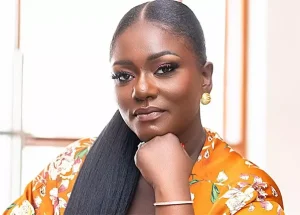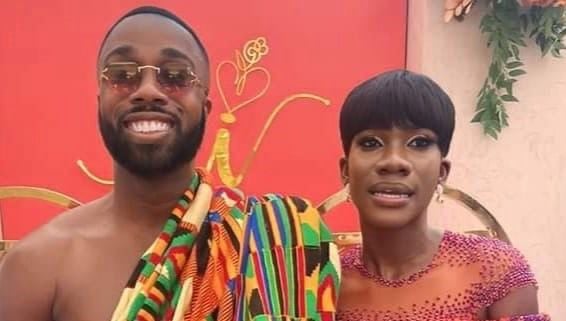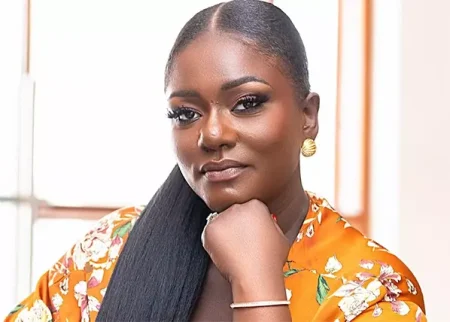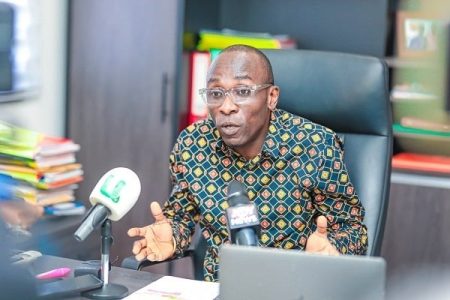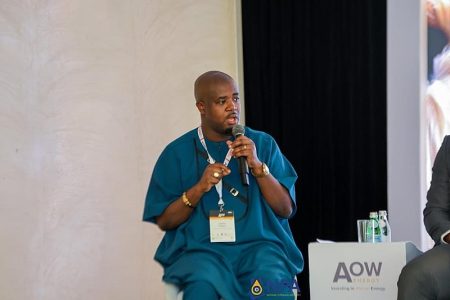Harold Amenyah, a prominent Ghanaian actor, embarked on a whirlwind romance culminating in a widely publicized wedding. Prior to meeting his wife, Irene Owusu, in 2022, Amenyah experienced a three-year period of singlehood. Their connection proved instantaneous and profound, leading to marriage precisely one year after their initial encounter. The chosen date, April 1st, April Fool’s Day, inadvertently fueled speculation about the veracity of the nuptials, with many presuming it to be an elaborate prank. Amenyah, however, affirmed the seriousness of his commitment, emphasizing the significance of the date as their anniversary. The rapid progression from initial meeting to marriage underscored the depth of their connection and their mutual desire to embark on a shared life journey.
The wedding itself, initially intended to be an intimate affair, garnered unexpected attention and became a trending topic. Amenyah and Owusu meticulously planned a private ceremony, limiting the guest list to a mere 100 individuals, including close friends, family members, and fellow actors like Caroline Sampson and Eddy Acquah. A strict “no phones” policy was implemented to maintain the privacy and sanctity of the occasion. Despite these precautions, images from the event surreptitiously found their way onto social media platforms, primarily WhatsApp, shared by attendees eager to document their presence at the exclusive event. The very privacy surrounding the wedding paradoxically fueled its virality, as public curiosity and the desire for exclusive content propelled the event into the social media spotlight.
The unintended publicity surrounding the wedding speaks to the inherent human fascination with celebrity life and the allure of exclusive events. The “no phones” policy, designed to protect the couple’s privacy, ultimately served to heighten public interest and create a sense of mystique. The leaked images, shared through informal channels like WhatsApp, became coveted glimpses into a private world, further amplifying the event’s reach and impact. The irony lies in the fact that the attempt to control the narrative by limiting access ultimately backfired, resulting in an even wider dissemination of information and imagery.
The swift trajectory of Amenyah’s relationship, from initial meeting to marriage within a year, highlights the unpredictable nature of love and the power of genuine connection. The three-year period of singlehood preceding his encounter with Owusu suggests a deliberate search for a meaningful partnership, culminating in a swift and decisive commitment when the right person finally appeared. The couple’s decision to marry on their anniversary underscores the significance of their initial meeting and the rapid development of their bond. This accelerated timeline challenges conventional relationship norms and emphasizes the importance of individual experiences and choices in matters of the heart.
The incident also provides a commentary on the pervasiveness of social media and its impact on privacy in the digital age. Despite the couple’s best efforts to maintain a private ceremony, the ubiquitous nature of smartphones and social media platforms ultimately rendered their efforts futile. The desire to share experiences and be part of the narrative, even in a limited capacity, proved irresistible for some attendees, leading to the inadvertent leakage of images and information. This highlights the challenges of maintaining privacy in a world where information can be easily captured and disseminated through digital channels.
In conclusion, Harold Amenyah’s whirlwind romance and subsequent wedding provide a fascinating case study on the intersection of celebrity life, social media dynamics, and the enduring power of love. The rapid progression of the relationship, the unintended publicity surrounding the wedding, and the ironic role of the “no phones” policy all contribute to a compelling narrative that underscores the complexities of navigating relationships and privacy in the digital age. The event ultimately serves as a reminder of the unpredictable nature of human connection and the ever-present influence of technology on our lives.


